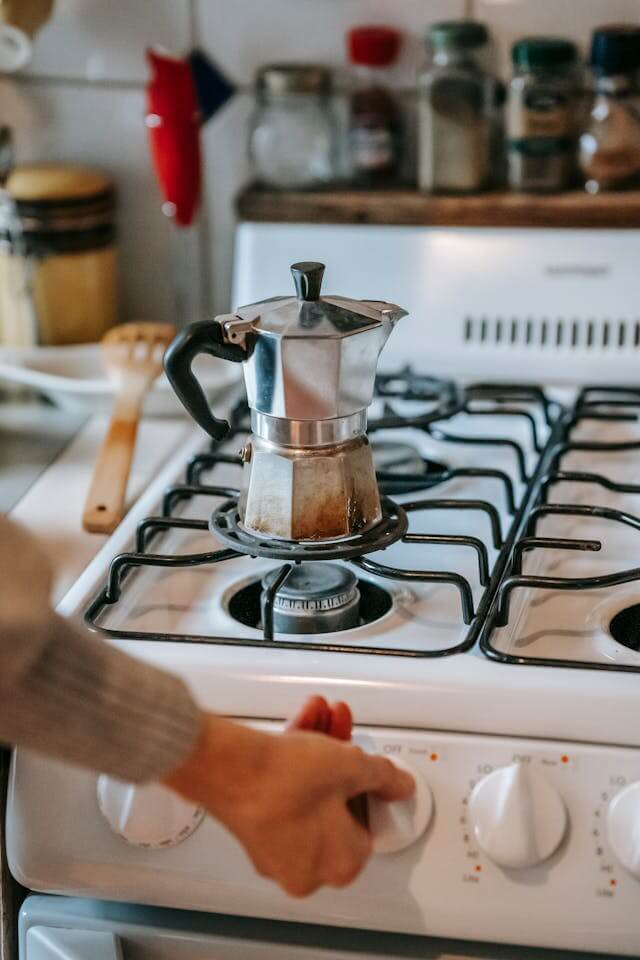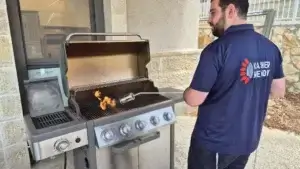Kashering is an essential part of maintaining a kosher kitchen, particularly when transitioning from non-kosher or for Pesach use. Gas pan rests—those metal supports positioned above the burners—are a vital part of your stove, and it’s important to kasher them properly. Proper kashering ensures that the pan rests meet the standards of Jewish dietary laws and can be used safely for kosher and Pesach food. Below is a step-by-step guide to kashering your gas pan rests for both kosher and Pesach use.
Step 1: Clean the Pan Rests Thoroughly
Before beginning the kashering process, you must ensure the pan rests are free of any food residue, grease, or buildup. This step is crucial to allow the kashering process to be effective.
Scrub the Pan Rests: Use a non-abrasive cleaner, dish soap, and a scrub brush to clean all surfaces of the pan rests. Pay close attention to areas where grease, food residue might have accumulated.
Soak if Necessary: If there’s stubborn residue or grease, soak the pan rests in hot, soapy water to loosen dirt. After soaking, scrub them again to make sure they are completely clean.
Dry the Pan Rests: Once the cleaning is done, dry the pan rests thoroughly with a clean towel or allow them to air dry.
Step 2: Inspect for Any Residue
Even after thorough cleaning, it’s essential to inspect the pan rests closely for any remaining grease or food particle. If any residue remains, it could interfere with the kashering process.
Visual Check: Look carefully for any visible grease or stains that may have been left behind.
Touch Test: Rub your fingers across the surface to detect any sticky or greasy substances.
If you find any remaining residue, clean the pan rests again before proceeding to the kashering process.
Step 3: Kashering by Libun (Burning Off)
The process of Libun involves heating the metal to an extremely high temperature in order to burn off any on-kosher or Chametz particles absorbed into the pan rests. This is the most effective method for kashering metal items.
How to Kasher Using Libun:
Heat the Gas Burners: Turn on your gas burners to the highest flame setting. The goal is to get the pan rests extremely hot, ensuring they burn off any food residue.
Use Tongs or Similar Tool: Hold the pan rests above the flame using tongs or another heat-safe tool. You need to make sure the entire surface of the pan rests becomes red-hot.
Ensure Even Heating: Move and rotate the pan rests so that all sides are exposed to the flame, ensuring the entire surface reaches a high enough temperature to burn off any absorbed food.
Step 4: Cooling Down
After the pan rests have been sufficiently heated and exposed to the gas flame, allow them to cool down completely. This is essential to ensure that they are safe to handle and ready for use.
Step 5: Alternative Method (If Applicable)
In cases where your pan rests are not directly over the flame or if they are in a stove top that doesn’t allow for direct flame exposure, there’s an alternative method to kasher them.
Place in a Hot Oven: Some authorities suggest placing the pan rests in a very hot oven (at least 500°F) for a period of time. The oven’s heat can help reach the necessary temperature to burn off absorbed food.
Gas Flame vs. Oven: However, the most effective method for gas pan rests is usually the direct exposure to the gas flame itself. It’s recommended to use the flame method, but the oven method can serve as an alternative if necessary.
Verify the Method: Before proceeding with kashering your pan rests, it is always best to consult with a rabbi or a halachic authority to verify the correct process, especially for Pesach preparations. This ensures that you’re following the proper guidelines specific to your situation.
Nachman Harris. Kosher Expert.
Available for any of your questions






